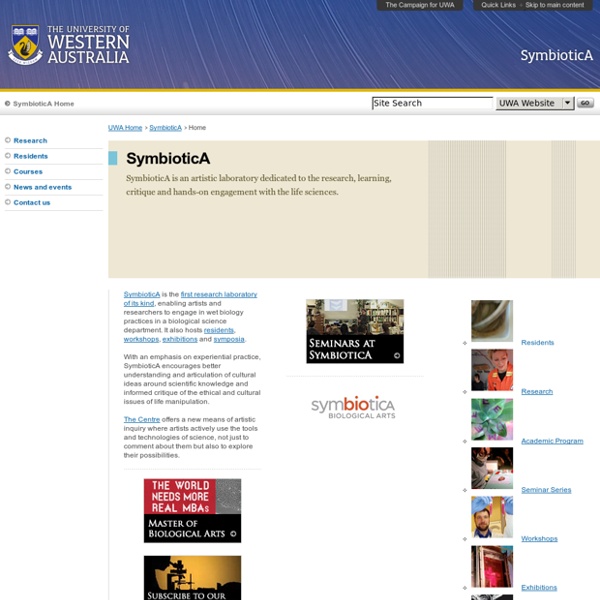



WAFT - SOUNDSCAPE How often do we ignore the variety of sounds surround us? Do we realize that as a human being, we constantly contribute to the sounds creation in daily life? These sounds can be heard from any kind of familiar voices, either in the form of a conversation, singing, praise, insults, sniffing, scratching, television sound, radio, mobile phone, the friction of tires on asphalt road, or maybe water pump. We unconsciously know the impact of our acts and sound whether positive or negative for ourselves, others, also society. The sound vibration as we created to an acoustic wave, passing through the air or other medium, it's reaching human senses, animal, and plant. Then the voices converted into electrical nerve impulses, which are sent to the brain. The project focuses on the composition of soundscapes on daily life, which has a purpose by interacting directly. Actually, the positive sounds isn't definite as the sound that produced by the instrument or the melodious of nature sound.
What Is Dark Ecology? | Changing Weathers In this essay, which draws on his book Dark Ecology, For a Logic of Coexistence, Timothy Morton — who originally coined the term dark ecology — explains what dark ecology is. He also argues how agrilogistics underpins our ecological crisis and our view of the world. Lighten up: dark ecology does not mean heavy or bleak; it is strangely light. “Progress means: humanity emerges from its spellbound state no longer under the spell of progress as well, itself nature, by becoming aware of its own indigenousness to nature and by halting the mastery over nature through which nature continues its mastery”. — Theodor Adorno “Dark is dangerous. The ecological era we find ourselves in — whether we like it or not, and whether we recognise it or not — makes necessary a searching revaluation of philosophy, politics and art. What is the present? These attunement structures are necessarily weird, a precise term that we shall explore in depth. Then Nikel becomes rather sad and melancholic. [3] S.N.
Genenpaspoort op De Beschaving | Nieuws Het kost nu nog een slordige tienduizend euro om er eentje te krijgen, maar dan weet je ook of je over dertig jaar kanker, reuma of een hartaanval krijgt. Of niet? Genoombioloog Edwin Cuppen spreekt hierover op de Bestuiving, tijdens het festival de Beschaving op 30 juni in de Botanische tuinen van de UU. Over een paar jaar kan iedereen een overzicht laten maken van zijn genetisch materiaal - een genenpaspoort dus. “Soms kan één afwijkend gen iemand ziek maken, maar meestal zijn er veel meer verschillende genen in het spel, bijvoorbeeld bij kanker. Er zijn ook ethische dilemma’s. Alle voorbehouden terzijde, het genenpaspoort zal zijn nut zeker bewijzen bij de behandeling van ziektes, zoals kanker, denkt Cuppen. Cuppen is erg benieuwd hoe zijn publiek zal reageren tijdens zijn lezing op de Beschaving.
Learn Create a 3D T-Rex Game Grades 2+ | Blocks Dance Party Minecraft Hour of Code Escape Estate Grades 2+ | Blocks, Python Code a 3D Space Invaders Game Minecraft Timecraft Rodocodo: Code Hour Pre-reader - Grade 5 | Blocks NASA's Space Jam Make a Flappy game Long Live Wakanda Grades 6+ | Blocks Hello World CodeMonkey Jr.: Pre-coding for Preschoolers Pre-reader | Blocks My Google Logo Grades 2-8 | Blocks Coding Town Grades 2-5 | JavaScript Mario's Secret Adventure: Build Your Own 3D Mario Game CodeCombat: Goblins 'n' Glory Grades 6-8 | JavaScript, Python Code Farm: Plant a Garden Blocks Jumper: Game Creation Make Shapes with Code Pre-reader - Grade 5 | JavaScript, Language independent (can be taught in multiple languages) AI for Oceans Grades 3+ | AI and Machine Learning The Grinch: Saving Christmas with Code Bot is sus?! Grades 2-8 | JavaScript | Internet Explorer 11, Microsoft Edge, Chrome, Firefox, Safari Code Club World: Make cool stuff with free coding games and activities Grades 2-5 | Blocks Dragon Blast Design your Hero
London BioHackspace | Biohacking / DIYBio in London WAFT SPEAP - Master d'Experimentation en Arts Politiques Le Jeudi 7 Février, nous avons eu le plaisir de recevoir Mathieu Dupperex, auteur de la thèse « Arcadies altérées : Territoires de l’enquête et vocation de l’art en Anthropocène ». À partir de ses travaux allant du delta du Mississippi à celui du Rhône, nous avons pu échanger avec le co-fondateur du collectif Urbain-trop-Urbain… Notre rentrée s’est faite à Bruxelles, le mercredi 30 janvier, dans le cadre de la semaine SHARE à laquelle nous avons été conviés par l’Académie Royale des Beaux Arts de Bruxelles ( A cette occasion, notre directrice de recherche Frédérique Aït-Touati a présenté Speap, ou comment enquêter par les arts. Le jour suivant, Jean-Michel Frodon… Le jeudi 15 novembre, nous avons eu le plaisir d’assister aux présentations des recherches de Mme Frédérique Aït-Touati et M. Le jeudi 25 octobre, nous avons eu le plaisir de recevoir les architectes Mme Charlotte Cauwer et M. Le jeudi 18 octobre, nous avons eu le plaisir de recevoir M.
Nieuw: vriesbestendige vliegen De vijf wetenschappers presenteren de resultaten van hun onderzoek in het wetenschappelijk blad PNAS. Normaliter worden ijskristallen in levende cellen gevormd op het moment dat een organisme afkoelt tot onder het vriespunt, maar het antivrieseiwit proline - die aan alle fruitvliegjes gevoerd werd - ging deze celbeschadiging tegen. De wetenschappers namen een aantal larven fruitvliegjes. Deze larven werden opgedeeld in twee leefomgevingen: een bak waarin de temperatuur 25 graden celcius was, en een bak waarin de temperatuur 5 graden celcius was. De vliegjes die geplaatst werden in de laatste bak, gingen over tot een sluimerstand. In beide bakken werd daarna de temperatuur verlaagd tot 5 graden onder nul en wachtten de onderzoekers tot de vliegjes bevroren waren. Toen de vliegjes weer ontdooid waren, bleef veertien procent van de groep vliegjes die eerst in sluimerstand was geraakt in leven.